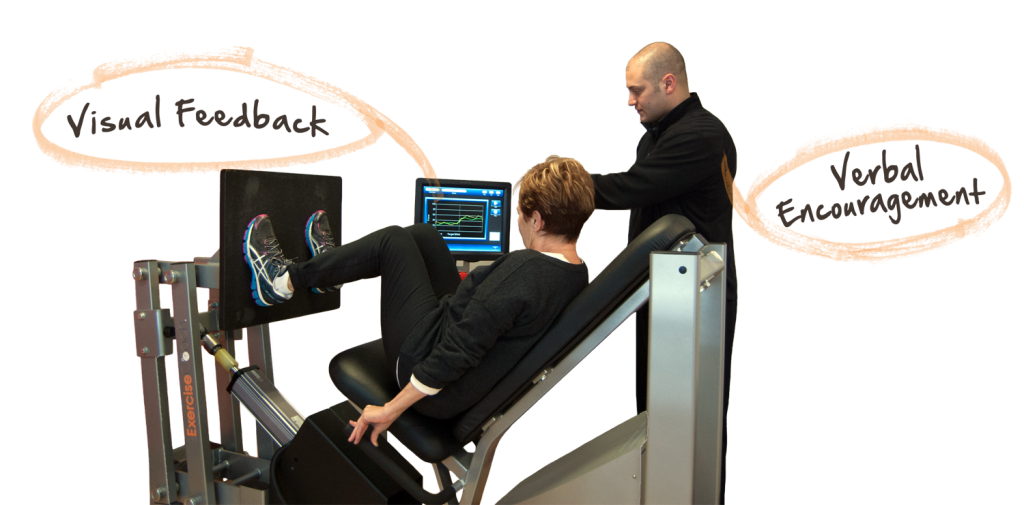
FITNESS FUELED BY FEEDBACK™

If you are a personal training client at The Exercise Coach you have no doubt heard our mantra – “Muscle Quality matters more than Movement Quantity.” For those of you who are unfamiliar with us, our focus is on the science which proves muscle is your primary biomarker. This science shows that your muscle’s functionality impacts not only your fitness but also your health and longevity. Guided by this paradigm, it’s our passion to inspire the not-yet-fit to take action and enjoy strength.
Our unique process was built to optimize results for men and women of all fitness levels. For 16 years we have been evolving this process and in recent years we have achieved a synthesis of technologies to present our clients with the pinnacle application of exercise science. You might say the heart of our methodology is feedback. This includes Professional and Visual feedback. The professional feedback comes from an encouraging coach that understands how to use “cues that count” and the visual feedback is delivered via “digital effort displays.” I’ll touch briefly today on why we think this feedback is so important.
“DIGGING DEEP” ENOUGH TO SEE CHANGE
I’ve already said that Muscle quality is a vital marker of health. It’s also the only pathway by which we can access the rest of the bodily system through exercise. Enhanced Muscle quality (strength per unit of muscle mass) is triggered by several key stimuli. We will look at these in another post. For today what I want you to understand is that the one factor – the key common denominator among these stimuli – is something called fiber recruitment. This simply refers to the number of muscle fibers that your central nervous system is required to contract (ie., produce force) at once. Higher effort requires the recruitment of a greater number of muscle fibers and therefore provides greater over all stimulation of one’s adaptive mechanisms. It’s also important to note that if effort, (and therefore fiber recruitment), remains below a threshold level then no stimulus is applied. In layman’s terms, if you don’t exert enough effort during exercise you don’t get any beneficial result from it. So how do we know if you are exerting enough effort? Is there a way to motivate higher effort? Enter digital feedback.
THE POWER OF FEEDBACK
There are numerous factors that are considered by our coaches when they use our digital displays and give verbal encouragement to our clients. For today, I just want to share two important beliefs about this dynamic and point out a supportive research experiment. At The Exercise Coach we use instantaneous digital feedback displays to help our clients “Dig Deep” and it is an absolutely revolutionary approach. Based on years of hands-on research and development I have a couple beliefs about the effectiveness of effort feedback when combined with verbal encouragement for the average person:
- I believe that we expedite (and in some cases make possible) our client’s experience of meaningful/optimal muscular exertion by weeks and in some cases months.
- I believe within a single exercise set, at any moment, the methods we use lead to anywhere from 10-100% more effort from our clients. This varies greatly based on individual factors.
It might be suggested that we see these differences only in novice clients and those that are less naturally inclined toward exertion. This is not case. Research findings corroborate our observations about force feedback and verbal encouragement on trained and untrained individuals. Studies have found the impact of feedback to be similar among trained and untrained individuals. It’s true that optimal muscular effort will have a disproportionately positive effect on untrained and older individuals. This is great news for the not-yet-fit. Feedback and encouragement are more than just training wheels for the untrained. Our experience leads us to believe much more.
